Even more than “cashew,” which sounds like a sneeze, “filbert” is the stupidest nut name ever. Fortunately, the NAAFRCP (National Association for the Advancement of Foods Resembling Chick Peas) promoted the more melodious “hazelnut.”
Proving that everything sounds better in Italian, “nocciola” rightly implies dark depths of flavor. The hazelnut grows abundantly in the Piedmont Region, and became a cocoa substitute as Italy rebuilt after World War II. This explains why nocciola gelato has the smooth richness of chocolate, and why Nutella tastes like chocolate spread with some hazelnuts, when it’s really the other way around.
This recipephany produces a classic, crunchy biscotti with a toastier, more mouthwatering flavor than the almond variety. Because chocolate is hazelnut’s soulmate, I used to throw in mini chocolate chips. But the chips smeared when I sliced the warm cookies for the second baking. I found that a thin coating of melted chocolate applied after baking keeps the biscotti pristine and lets the nocciola flavor prevail.
These biscotti are also fine without chocolate, and are excellent dunkers that can convince a regular coffee that it’s cappuccino.
Nocciola (Hazelnut) Biscotti Dipped in Chocolate
- 2 cups all-purpose flour (plus a little more for releasing dough from food processor, if needed)
- 1 cup sugar
- 1 teaspoon baking powder
- 3 large eggs
- 3 tablespoons Frangelico hazelnut liqueur
- 2 teaspoons vanilla extract
- 1 cup unskinned hazelnuts, toasted until golden (about 8 minutes at 350º)
For dipping:
- 1 dark chocolate candy bar, about 2 ounces, or whatever suits your taste
- Preheat oven to 350º. Lightly grease two baking sheets.
- In a food processor with steel blade, whir together flour, sugar and baking powder once to combine.
- In a mixing bowl with a spout (if you have one), whisk together eggs, Frangelico, and vanilla extract. If your bowl is spoutless, transfer the liquid to a large measuring cup or pitcher.
- With the food processor running, add the liquid through the feed tube, stopping when all liquid has been poured. Add hazelnuts and pulse just to mix the them into the dough and to coarsely chop a few. Most will stay whole. If dough is too sticky, add a little more flour (not much) just so you can release it from the sides of the food processor. (Stickiness of dough can vary, depending upon humidity, size of eggs, and variations in flour. Adding a little extra flour is fine.)
- Spread dough with a spatula so it forms a strip onto each baking sheet—each about 14 inches long. Sticky dough will spread, so allow for a couple of inches on each side. If dough is firmer, flatten each strip with your palm to about 3 inches wide.
- Bake about 20 minutes, or until the long cookie feels firm.
- Remove from the oven, leaving the oven on. Let the strips stand for 20 minutes, then slice crosswise into about 1/2 inch thick cookies. Or, cut slightly on a diagonal for longer cookies.
- Place the cookies, cut side down, back onto the sheets. Bake until golden and crisp, about 15-25 minutes.
- Heat chocolate in a bowl in the microwave, taking it out after only about half melts. Stir to melt the rest of the chocolate completely. Dip the bottoms of the biscotti into the chocolate, then spread using a rubber spatula to coat. Place cookies cut size down on wax or parchment paper to let chocolate set.
Makes about 4 1/2 dozen biscotti, depending upon how thin you slice them.
1/13/14 Notes: I have tweaked this recipe since posting.
- I took out the optional almond extract.
- Directions make it clearer that the sticky dough will spread considerably.
- If you cut 1/2 inch cookies, you’ll get more than 4 dozen cookies.
- Baking time can be longer depending upon how often you open the oven to check crispness. (I like a very crispy cookie.)
- Melt chocolate part of the way in the microwave, then stir to melt the rest, in an effort to temper the chocolate.

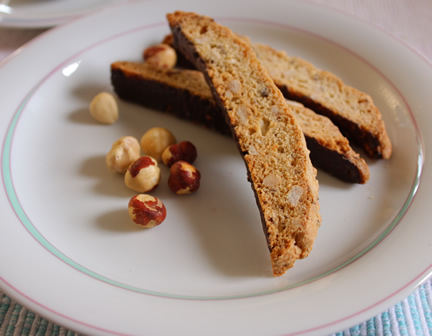

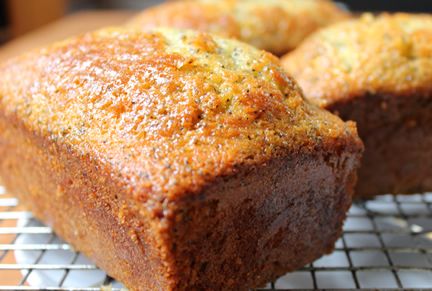
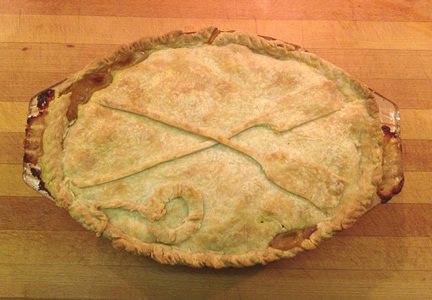
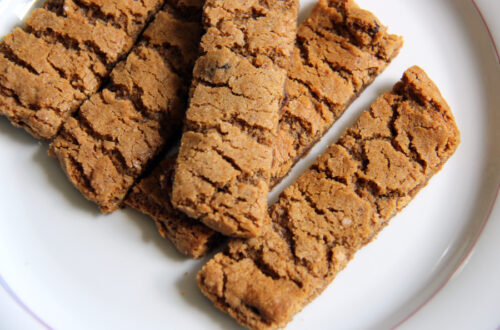
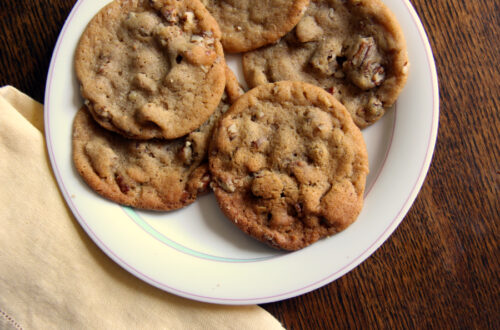
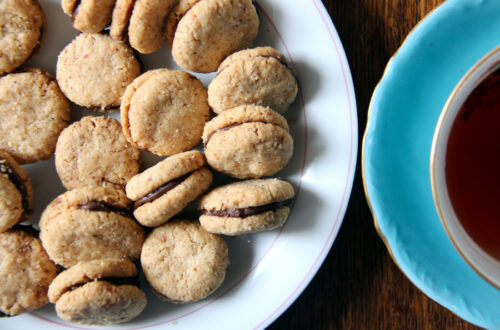
3 Comments
Pingback:
Diane Brody
Thanks, Leah, I have never known how to temper chocolate. So I watched the Cook’s Illustrated video at http://www.cooksillustrated.com/videos/2556-the-science-of-cooking-tempering-chocolate. The secret it seems is to barely melt the chocolate. So glad you liked these — thanks so much for the tip!
Leah
I finally made these. They’re very very good. A recipe in Cook’s Illustrated for florentines in the current issue (Nov-Dec 2013) gives a somewhat more detailed method for quick-tempering chocolate that I found useful; also they call for 4 ounces of bittersweet chocolate, which was about the right amount to coat one side of my biscotti (my yield was 36 of them).